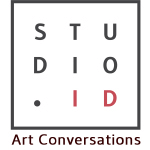Text: Ryan Mario
The landscape of art fairs has been a sifting through uncertainty for a more than half a decade now since its demand peaked back in 2013 to 2014. The number of fairs globally has ballooned from fewer than 60 in 2000 to almost 300 today, one for almost every day of the year. Yet, “Fairtigue”, that iconised weariness that afflicts the art world is a smack on the hand of some collectors and investors who barely visit a single art fair from 2016 to 2018, let alone run a fair-hopping marathon from back when art fairs were at their zenith.
Even so, pulling the plug on art fairs for its dip in patronage is myopic to say the least. Art fairs remain to be an important component alongside auctions which provide structure and geographical layout of the annual calendar for key identities of the art business. On top of nearly 300 fairs with international elements covering fine and decorative art, larger areas of the collectible art markets are subsumed under hundreds of other niche local and regional fairs. 2018 and early 2019 saw about 20 new events added to the art fair schedule, including 1-54 – the contemporary African art fair that launched its new edition in Marrakech, JINGART in Beijing, the Discovery Art Fair in Frankfurt, Taipei Dangdai in Taiwan, Art Chengdu in China, S.E.A. Focus in Singapore, and Frieze’s new fair in Los Angeles in 2019. The consolidated aggregate of art fair performances points to the fact that these art events are increasingly pivotal for galleries and artists. Art fair sales were estimated to reach $16.5 billion in 2018 with the total value of global dealer sales at 46%.
Aside from the financial and economic considerations of art fairs, the social benefits are also significant for these events to remain at the peak of relevance in the art world. While the glitz and glamour of art fairs exude the bourgeoisie lifestyle for major players in the art world, recent instalments of these shows have realigned their socio-institutional features to make it more palatable for the general public or first-time art buyers. Art fairs are the network points for collectors, professionals, and dealers from distant regions to congregate for mutual observation and presentation of rising talents. They also set an industry standard for the activation of weak ties in the market. With an international line-up of personalities from every corner of the globe, these events are melting pots of culture and heritage that redefine creative boundaries for everyone.
As the demand for art is no longer reserved for high-end consumers, the fluctuation in the appearances of art fairs within the industry are closely monitored to determine the sway of the market and buyer demographics. Building up satellite fairs around major art fairs may prove to be strategic in offering smaller galleries more platforms to compete amongst the giants while filling in vital niches in the market. Granted, the flood of fairs may be overwhelming, but they do provide different specialisations and programming thrusts. After all, it is a matter of vacillating between different platforms, and it’s a good thing that there are now many opportunities to be tapped on. With greater diversity and choices art fairs offer, artistic projects and endeavours will appear even stronger in context.

